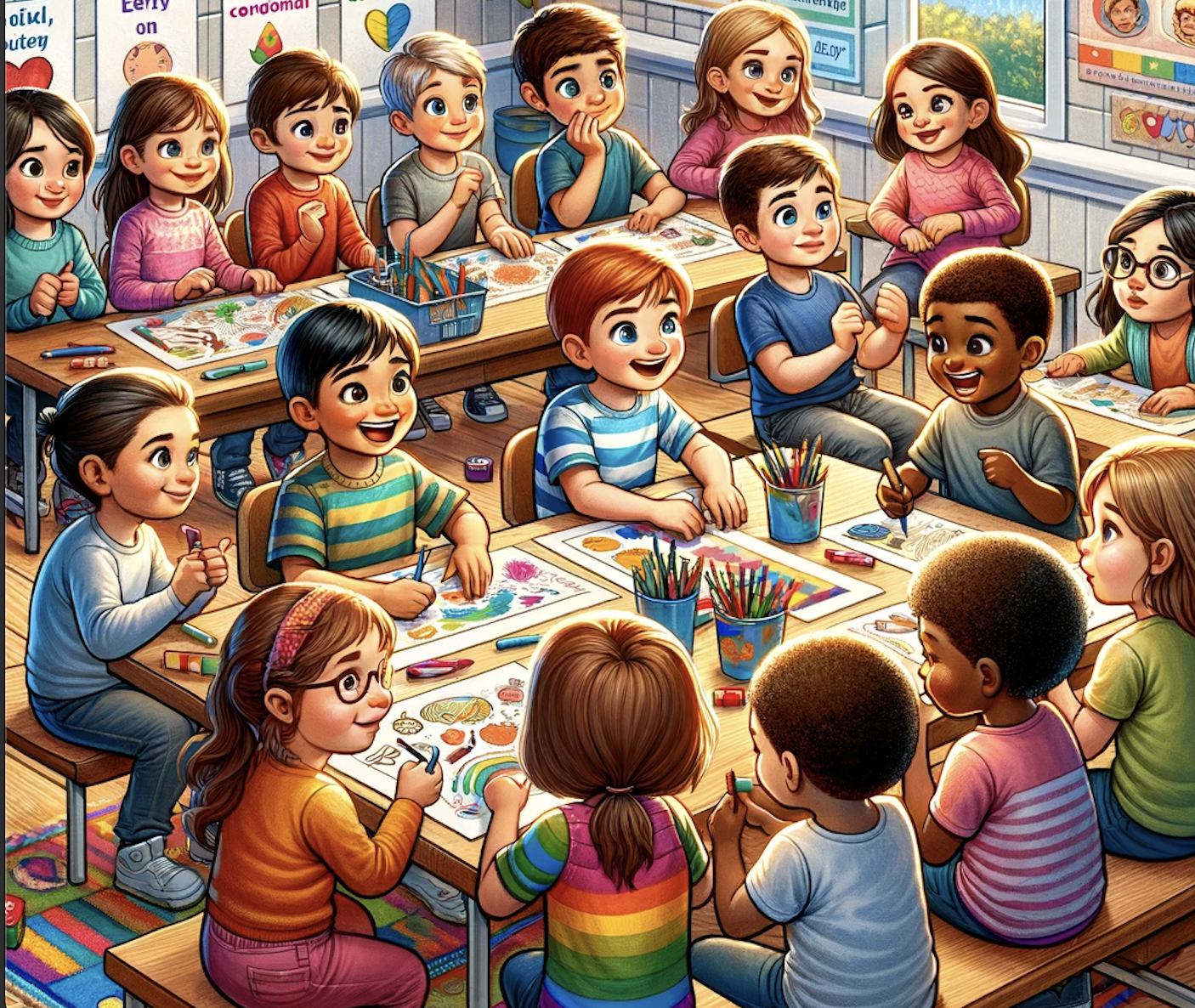Self-concept

Image Source: Chat GPT 4
The development of a self-concept—how children perceive themselves and their abilities—significantly influences their psychological growth, well-being, and social interactions. By the time children have entered kindergarten, they will have typically developed an understanding of themselves through physical characteristics, preferences, and abilities. This early self-concept is primarily concrete and observable, revolving around specific facts such as the following examples: “I have blue eyes,” “I like ice cream,” or “I can run fast.” Their self-concept is also quite positive and optimistic, with children in early elementary school tending to overestimate their abilities and competencies (Lally & Valentine-French, 2019).
Over time, the self-concept evolves and becomes more nuanced. During late elementary and middle school, children start to compare their abilities, achievements, and attributes with their peers, leading to a more realistic self-assessment. Their self-concept becomes more differentiated and balanced, with consideration given to their individual strengths and weaknesses. They begin to understand that they may excel in certain areas (such as art or math) and struggle in others (such as sports or reading). At this stage, children’s self-concept also expands to include their social roles and statuses such as being a good friend or a responsible student (Lally & Valentine-French, 2019). As they grow older, they become more aware of how others perceive them, influencing their self-concept.
As future teachers, it is important to recognize that how you interact with your students may directly impact how they think of themselves. A critical, dismissive, or mean teacher can negatively impact a student’s self-concept; this can be especially problematic if the student belongs to a marginalized group or has developmental or learning differences. At all ages, but especially for children in the fourth grade and above, teachers should carefully monitor how they interact with their students to ensure that they are providing a positive, supportive voice for those still developing a sense of who they are.
The transition into adolescence brings about a major shift in the self-concept. Adolescents strive to form a consistent and integrated self-concept, grappling with questions such as, “Who am I?” and “Where do I fit in?” The self-concept also extends beyond the physical and social realms to encompass more abstract traits and values. Adolescents start to consider their beliefs, attitudes, and future goals as defining aspects of their self-concept. For example, they may begin to associate with groups that share their values (e.g., political parties, activist groups, professional organizations, etc.) and use membership in those groups as part of how they define themselves. They also grapple with their identities on various fronts—vocational, political, religious, ethnic, gender – along with how to manage the varying ways that these identities might be expressed in different environments or with different people (Lally & Valentine-French, 2019).
Think, Write, Share
- How does a child’s self-concept evolve from early childhood to late elementary and middle school years in terms of their understanding of their own abilities and attributes?
- In what ways do teachers’ interactions with students directly impact a student’s self-concept, particularly for those belonging to marginalized groups or those with developmental or learning differences?
- How does the transition into adolescence affect a person’s self-concept, especially in terms of grappling with abstract traits and values and managing multiple identities?
Application Challenge
Design a whole class activity to promote a positive self-concept in a grade of your choosing. Be sure to describe how students in your selected grade understand the self and explain how your activity will support positive development.